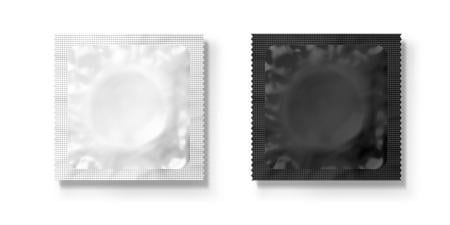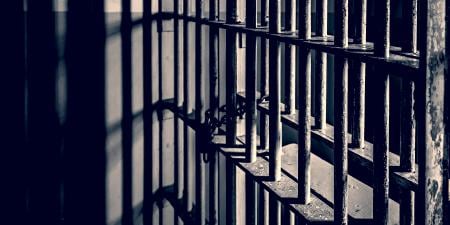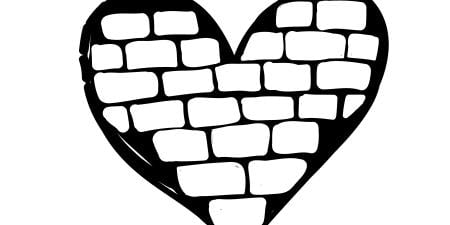The physician who treats incarcerated criminals is often in an uncomfortable position. His or her practice is rife with uncertainty and restrictions. What duties—beyond urgent care—do correctional health professionals have to prisoners? Patient and physician do not choose one another, and health care is offered on a take-it-or-leave it basis. Prisoners' access to care is severely constrained. Physicians must consider all the patients in the system rather than just the one with an immediate need. The prison environment compromises patient autonomy, privacy, confidentiality, and even the ability to avoid harm. Conflicts are inherent in the system. Spending on prisoner health care is unpopular; providing health care to people who have violated society's norms and rules, especially when resources are extremely scarce, invites anger and criticism and sometimes results in inappropriate and unethical compromise. Now, more than ever before, these challenges in caring for prison inmates require that physicians maintain a clear view of their legal and ethical obligations to prisoner-patients.
Why now? The 1976 case of Estelle v. Gamble and related U.S. Supreme Court decisions have made it clear that the state is obligated to provide prisoners with necessary care for known, serious medical needs [1]. Failure to do so violates the prisoner's Eighth Amendment right to be free from cruel and unusual punishment, and there are a number of reasons why pressures in prison medical care are increasing. A central reason is cost; health care grows more expensive by the day. New technologies, drugs, and standards of care are driving up costs for everyone. Prison physicians are in the awkward position of trying to keep costs low while observing the civil rights of a nearly voiceless population and fulfilling their own professional obligations.
Exacerbating the ordinary cost pressure is the fact that the people in U.S. prisons and jails— numbering more than 2.2 million [2]—are less healthy than the general population. They are far more likely to have engaged in high-risk behaviors that can result in organ damage, exposure to serious infectious diseases (e.g., HIV, hepatitis C virus, hepatitis B Virus, TB, and MRSA (methicillin-resistant Staphylococcus aureus), and untreated injuries that develop into disabilities [3]. The majority of state prisoners are from low income groups, have less education than the general population, and have lacked routine health care for most of their lives [4]. Furthermore, the prison population ages more rapidly than unincarcerated individuals do [5]. A prisoner is often considered geriatric at age 50-55, because he or she experiences age-related ailments and disabilities typically observed in much older individuals. The ethnic make-up of the prison population is also a contributing factor. Prison inmates are disproportionately black and Hispanic—groups that are more likely than whites to suffer from chronic diseases like hypertension and diabetes [6]. Finally, due to their premature aging and serious illnesses, many people in prison face death while incarcerated.
Social Pressure to Limit Health Care for Prisoners
For the most part, the public is unsympathetic to the plight of the sick prisoner or to that of the beleaguered physician who is expected to do more with less while being true to professional ideals. Adequate health care for prisoners adds up to an unwanted tax burden for what some view as a luxury for an undeserving group.
Lack of sympathy can turn to outrage at the idea that a prisoner might receive an organ transplant, especially when the need is the consequence of illegal substance abuse or other socially unacceptable behavior. Donor organs are scarce. Critics argue that many law-abiding citizens with organ failure cannot afford the extensive testing required to qualify for placement on a transplant list, much less the large up-front lump sum payment transplant centers require before listing the patient with the United Network for Organ Sharing (UNOS), the group responsible for distributing cadaveric organs that have been donated. These opponents stress that the prisoner who actually receives the transplant is profiting from his crime and potentially gaining a new lease on life, while another, who some consider more worthy, may die for want of a donor organ [7].
Built into this argument is the assumption that a person's moral worth derives from his or her benefit to society. If one takes this way of thinking, the argument is a slippery slope. Reckoning a benefit to society depends on vantage point of the observer/judge. Worth must be measured in concrete terms, be it wealth, beauty, notoriety, heritage, service, talent, might, or some other attribute or set of attributes. One's perceived social worth also depends on the society. UNOS recognized this problem when it adopted its approach to the allocation of organs. Its policy with regard to organs needed for survival (e.g., liver) is to attend to medical need rather than to social factors. Its decision grew out of the much-criticized practices of the so-called god squads, the committees created in the early days of dialysis to decide who would receive dialysis and live and who would die due to kidney failure. Perhaps it is not surprising that the typical beneficiary of god squad deliberation was a married male churchgoer with children [8].
Internal Obstacles to Prisoner Health Care
The tax-paying public and their political representatives are not the only sources of stress for physicians who treat prisoners; pressures also come from within the prison. Prisoners who ask for care—sometimes care that they do not need—strain the system. Drug-seeking behavior is not unusual, malingering occurs. Some prisoners seek health care for no other reason than to break up the monotony of the prison routine. These actions cause many medical professionals to react with suspicion to every complaint. The suspicion can become so great that the physician begins to assume that all prisoners are exaggerating their discomfort.
Prisoner-patients also make assumptions. They fear that the care they receive will be inadequate, that medical staff and prison officials will deliberately ignore their needs, even to the point of hastening death through medical neglect [9]. Prisoners' assumptions contribute to poor communication which can result in less-effective care.
Prisoners' suspicions and fears can be encouraged and enhanced by correctional personnel whose goals are at odds with the goals of medicine. Correctional personnel have two major sets of duties. First, they set and enforce prison policies by maintaining discipline and security, encouraging rehabilitation, and using the taxpayer's money responsibly. The second duty is to prevent violations of prisoners' civil rights. This function entails protecting prisoners from known dangers, providing access to basic needs including health care, and avoiding discrimination, retaliation, violation of certain privacy rights, and interference with access to the courts. Simply put, the goals of correctional officers are to control prisoners and maintain order while operating within the limits of the law. The easiest way to achieve these goals is to assume a kind of military model of regimentation and hierarchy and to deal with prisoners as a group rather than as individuals with specialized needs. Coercion is a common tool for achieving these ends.
The staff attitude that accompanies the goals of discipline and security may be among the most serious challenges the prison physician faces. Prisoners are often viewed as malicious, manipulative, violent threats to the power structure, a structure that is rigidly maintained through punitive action. Many physicians are better able to identify and have rapport with prison personnel than with the prisoners. After all, the incarcerated have been convicted of wrongful acts. Responding to them as inferiors who deserve less than full attention and care is easy to do. Correctional officers and other prison officials may be inflexible, but they represent the good guys. Like most health care professionals, most correctional personnel are law-abiding citizens who take on the potentially dangerous task of limiting the effects of harmful agents in society. The methods are different from those of the military, yet the roles are still cast as authority figure versus underling or battle warrior versus threatening enemy.
A physician is supposed to see the prisoner as an individual who has personal needs, a right to privacy and confidentiality, and a right to autonomy in health care decision making. Yet security personnel accompany the prisoner to the physician, so that there is no real opportunity to preserve the patient's privacy or confidentiality. Ordinarily, a physician is supposed to advocate for the patient, to prevent harm when possible, and to hold the patient's interests above his or her own. These obligations become difficult due to the opposition from those outside of medicine and the limited freedoms afforded to prisoners. Staff suspicion and animosity toward prisoners have the potential to color each medical encounter.
When the needed health care is an organ transplant or some other procedure that is expensive, the physician must be especially diligent about maintaining perspective. Enduring illness is not part of the prisoner's sentence any more than starvation is, or torture. The law is clear on this point. A physician's professional judgment about what care is medically necessary does not depend on whether the patient is likeable, where he lives, what he has done that has contributed to his need for health care, or whether he is an upstanding member of the community.
Many prison systems have had difficulty coming to grips with these terms of care. But the numbers of prisoners with end-stage organ failure can no longer be ignored. The economic trade-off between supplying the necessary health care and defending and losing Eighth Amendment lawsuits may be tipping in favor of providing the care.
References
-
Estelle v Gamble, 429 US 97 (1976). The U.S. Supreme Court's language is as follows: "deliberate indifference to serious medical needs." Imbedded in this phrase are two elements that form the test used in subsequent cases to determine whether a prisoner's right to be free from cruel and unusual punishment has been violated. First, the court must determine whether the prisoner's health care need is serious. The easiest way to establish that the need is serious is for a prison physician to officially indicate that the prisoner needs treatment. If there is disagreement based on reasonable medical judgment among prison physicians about the need, this prong of the test is not met. The second part of the test requires the prisoner-plaintiff to show that the individual(s) who denied or interfered with the necessary care did so with awareness of the risk of harm.
-
US Department of Justice. Prison statistics. Accessed December January 4, 2008.
-
See for example, Baillargeon J, Black SA, Pulvino J, Dunn K. The disease profile of Texas prison inmates. Ann Epidemiol.2000;10(2):74-80; Baillargeon J, Soloway RD, Paar D, et al. Ann Epidemiol. 2007;17(10):808-813.
-
According to Bureau of Justice Statistics Web site, a 2003 survey indicated that 68 percent of the people in prisons and jails had less than a high school education. Accessed December 26, 2007.
- Mitka M. Aging prisoners stressing health care system. JAMA. 2004;292(4):423-424.
-
According to 2006 Bureau of Justice Statistics figures, 3,042 black males were sentenced to prison per 100,000 black males; 1,261 Hispanic males were sentenced to prison per 100,000 Hispanic males; and 487 white males were sentenced to prison per 100,000 white males. Accessed December 26, 2007.
-
See, for example, Perry DL. Should convicted criminals receive heart transplants? Santa Clara Magazine; Fall 2002. http://home.earthlink.net/~davidlperry/heart.htm. Accessed July 17, 2007. Perry writes, "That seems grossly unjust to me. When people commit violent crimes, they exhibit an appalling lack of regard for the basic rights and well-being of their victims. In my view, they thereby forfeit any future claim to a heart transplant." See also, Associated Press. Prisoner gets $1M heart transplant: should convicts receive hard-to-get organs? Sacramento, CA: January 31, 2002. http://www.cbsnews.com/stories/2002/01/31/health/main326305.shtml. Accessed July 17, 2007. The article states, "You have to wonder if a law-abiding, taxpaying citizen drew one last breath while Jailhouse Joe was getting a second wind." California State Senator Jeff Denham of California proposed a bill that would give Californians the freedom to decide whether they wanted their donated organs to be available to prison inmates. The bill failed despite the emotional force provided by the senator, whose father died while awaiting a liver transplant. Finally, see Lee WV. A new heart, or liver, for a convict. The Tech. January 29, 2003. Accessed July 17, 2007.
- McGough LJ, Reynolds SJ, Quinn TC, Zenilman JM. Which patients first? Setting priorities for antiretroviral therapy where resources are limited. Am J Public Health. 2005;95(7):1173-1180.
- Linder JF, Meyers FJ. Palliative care for prison inmates: "Don't let me die in prison". JAMA. 2007;298(8):894-901.



